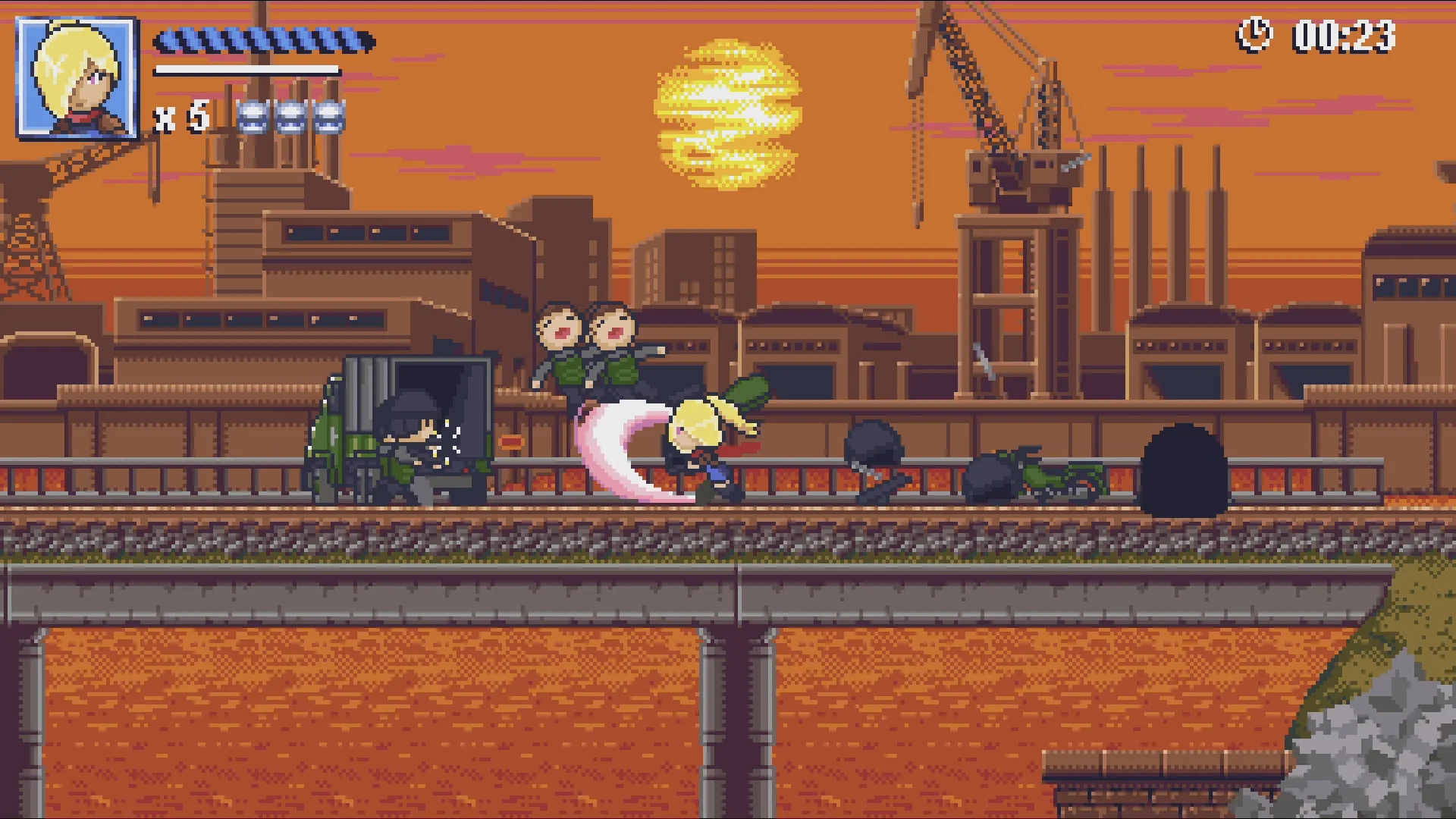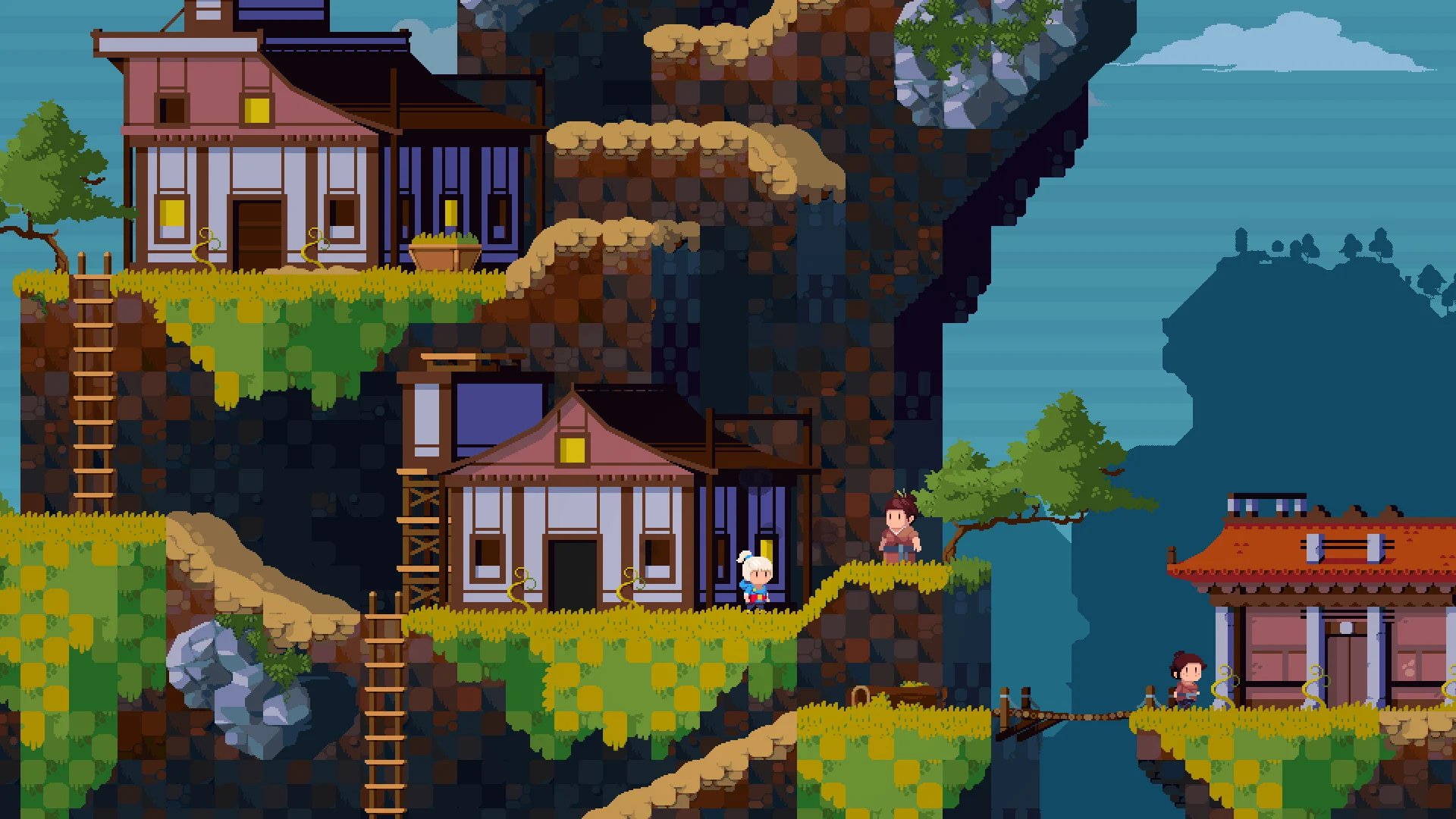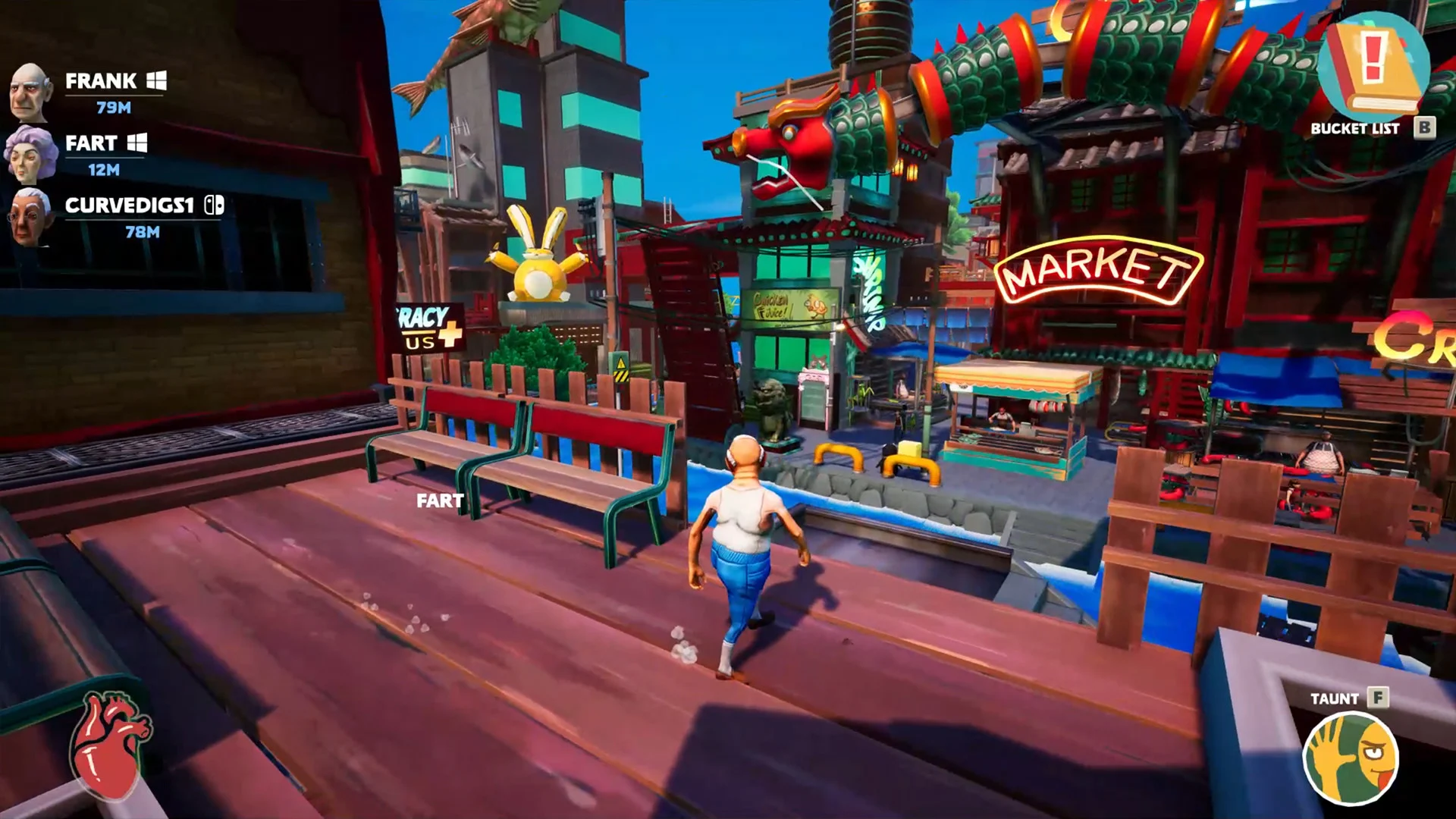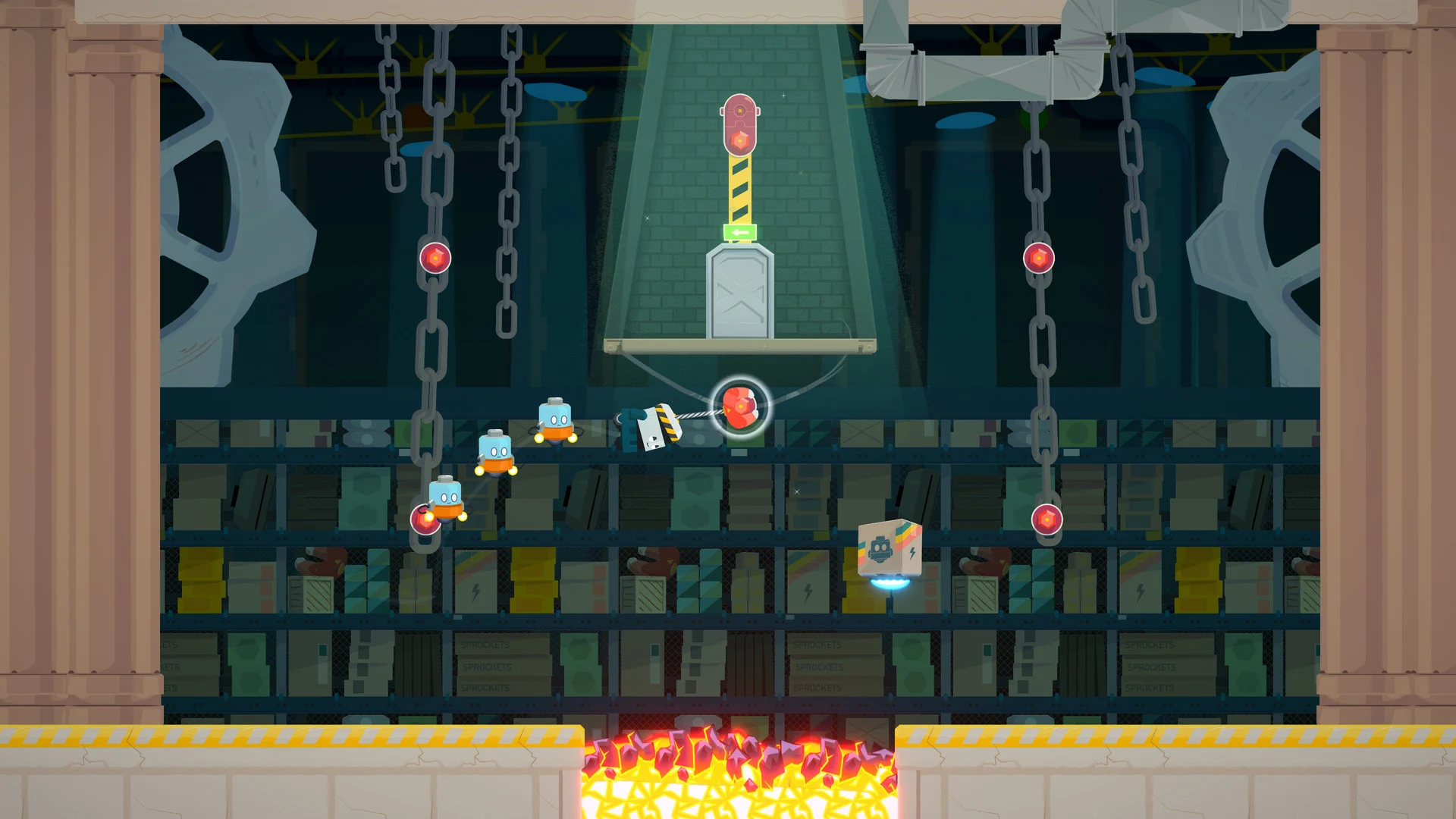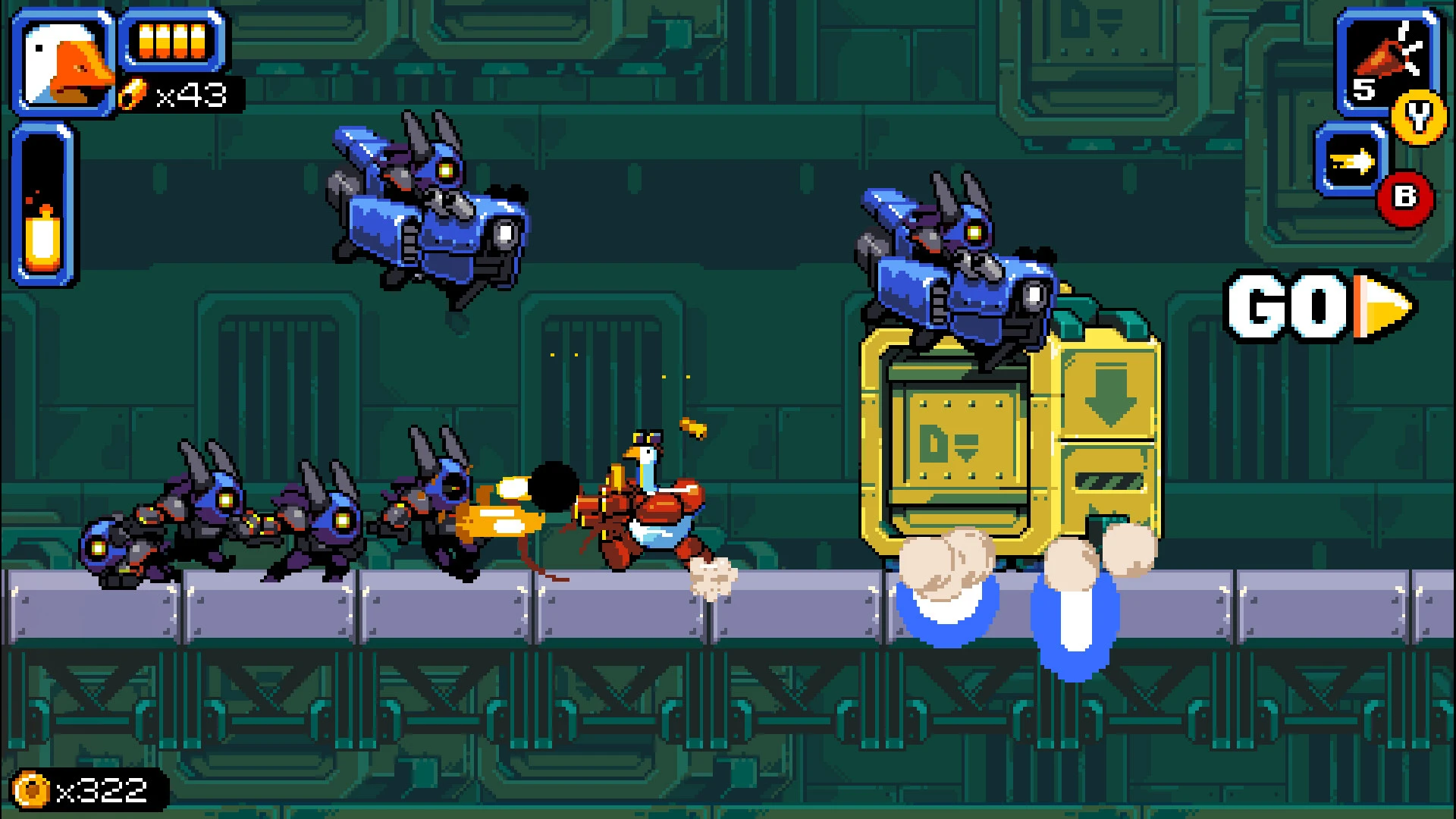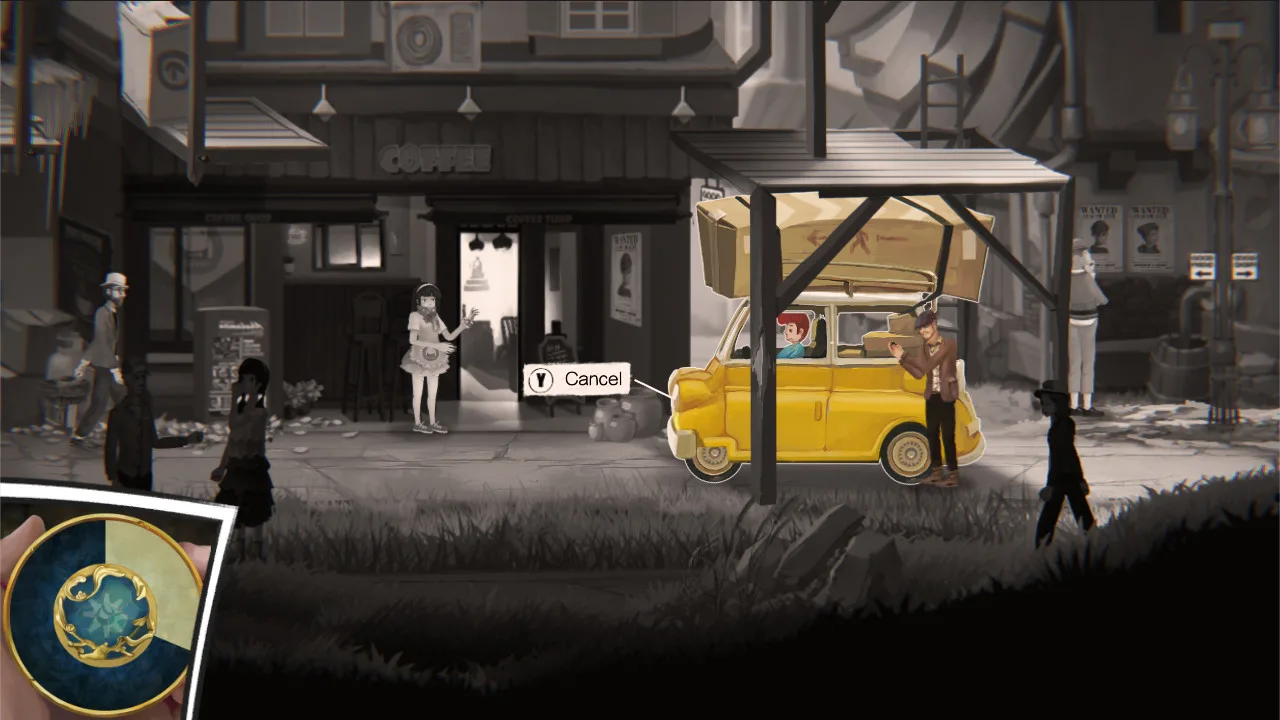The hack and slash and beat ’em up genres were some of the biggest genres when video games made their initial jump to home consoles. Growing up this genre was one of my favorites as many of my favorite games on the NES and SNES came from these genres. While I am still a fan of the genre it isn’t one of my favorites anymore as my tastes have moved more to other genres. Every so often I like to try out a new game from the genre though especially when they try to recreate those old 8/16 bit games. This brings me to Infinite Beyond the Mind which tried to recreate what we enjoyed about the old beat ’em ups and hack and slashes while adding in some platforming and shoot ’em up mechanics. Infinite Beyond the Mind tries to recreate the classic beat ’em ups/hack and slashes and succeeds in some ways despite not bringing anything particularly original to the genre.
We at Geeky Hobbies would like to thank Emilie COYO and Blowfish Studios for the review copy of Infinite Beyond the Mind used for this review. Other than receiving a free copy of the game to review, we at Geeky Hobbies received no other compensation for this review. Receiving the review copy for free had no impact on the content of this review or the final score.
In Infinite Beyond the Mind you play as either Olga or Tanya. The evil Queen Evangelyn Bramann has taken over the Beljantaur Kingdom. With the ultimate goal of world domination Queen Bramann has expanded her army to almost undefeatable levels. Only Olga, Tanya and their special abilities can stop her from taking over the world. Will their powers be strong enough to ultimately defeat Queen Bramann?
While Infinite Beyond the Mind utilizes a number of different mechanics I would say that its main mechanic should probably be considered hack and slash/beat ’em up. Anyone familiar with these genres should already have a pretty good idea of what to expect from much of the gameplay as these mechanics are very similar to most of the older games from this genre. Much of the gameplay involves fighting the many enemies that will attack you as you move towards the end of the level. While the enemies have various ranged and melee weapons, your attack options are pretty limited. You are given one attack button which performs a melee attack. To help avoid enemy attacks you are also given a dodge ability. Eventually the game also gives you a jump attack which allows you to attack enemies in the air. Basically the combat boils down to mashing the attack button until you deal enough damage to defeat an enemy.
In addition to the hack and slash mechanics the game also has some light platforming. The platforming mechanics are nothing particularly original. Basically you have a jump and a double jump which you will use to jump between various platforms while avoiding enemy attacks. This is used to jump over gaps or climb vertically. To get distance on your jumps you can use the dodge which lets you somewhat glide. The game also lets you jump off walls which is used to make some jumps, but more often than not is used to save you when you miss a jump. Ultimately there isn’t much to see in this mechanic as it doesn’t really differ much from your typical 2D platformer.
The final mechanic in the game is that every so often you will encounter a shoot ’em up level(s). In these levels you will control your character like a ship. You can freely move up, down, left and right without the need for jumping. You are given a ranged weapon that you can use to shoot the enemies that get in your way. You can either use a quick fire approach or you can power up your shot to deal more damage. In either case you need to occasionally wait as your weapon cools down. The objective of these levels is to kill the enemies while avoiding their projectiles so you can survive until the end of the level.
At this point most people are probably thinking that each of these mechanics sound like pretty much every game from their respective genres. For the most part that observation would be correct. Infinite Beyond the Mind doesn’t really do anything particularly original. As a matter of fact I can’t think of a single mechanic off the top of my head that Infinite Beyond the Mind introduces that isn’t used in pretty much every other game from these genres. The game will never be considered highly original as it doesn’t really bring anything new to the table.
While Infinite Beyond the Mind is not a particular original game, I still had fun with it. The combat is not particularly deep as it mostly just involves mashing the same button over and over again. Despite this I still found the game to be fun. The game doesn’t really add anything new to any of the genres, but you can still have fun due to the genres basic mechanics. The combat is basic, but there is something really satisfying about mowing through a ton of enemies that stand in your way. The platforming is nothing spectacular, but it still maintains the enjoyment of your typical 2D platformer. I have never been a huge fan of the shoot ’em up genre, but I also had some fun with these aspects of the game.
Adding to the enjoyment is the fact that the entire game is couch co-op. Maybe it is just me but I have always found these type of games to be more enjoyable with another player. The co-op mechanics don’t really change the gameplay all that much outside of having two players to take down the enemies. These type of games are almost always more enjoyable if another player tags along. This allows players to work together to take down the enemies. The co-op works well for the most part outside of the occasional time when the game snaps one of the players to the other player due to the players getting too far apart. People who like co-op games should enjoy this aspect of the game.
In addition for the most part I think the controls are pretty good. There will be occasional times where the game doesn’t exactly follow your directions. Sometimes you will think you should have made a platform or missed a projectile, but the game doesn’t recognize it. Most of the time though when you receive damage it will be due to your own fault. The main reason I think the game’s controls work well is because the game ultimately doesn’t have a lot of controls. You basically have an analog stick/directional buttons to control your movement, a jump button, an attack button, and a dodge button. That is all there is to the controls. Outside of learning how to avoid enemy attacks there isn’t much of a learning curve.
As for the difficulty I would say that Infinite Beyond the Mind is a little up and down. I ended up playing the game on the default difficulty setting. Most levels seemed quite easy. You can usually breeze through several chapters without running out of lives. When you run out of lives you will have to restart from the beginning of your current chapter with a new set of lives. While most of the levels are quite easy there will be an occasional level that can be kind of challenging. Some of the boss fights can also be kind of hard. Most of your deaths in the game are likely to come from what I call “cheap deaths” though. Many of the lives I lost throughout the game came from when I was jumping between platforms and an enemy bullet hit me. This stops most of your momentum leading to you falling down a pit to an instant death. I have never been a fan of cheap deaths and the same is true for Infinite Beyond the Mind. I can’t blame the game too much though as many of these type of games suffer from this problem.
The atmosphere and story is basically what you would expect from this type of game. I found the graphics to be okay. They aren’t fantastic, but they aren’t bad either. The game sometimes has some interesting locales, but regularly ends up using the same background elements and units. The game music is solid as fans of these type of games should enjoy it. As for the story it is quite generic. Basically it is your typical story of having to stop an evil character from taking over the world. Outside of the starting cutscene the game doesn’t really take much time to address the story. It is pretty obvious that Infinite Beyond the Mind was designed as an homage to late 1980s and 1990s games from these genres and thus you basically get what you would expect from the story and overall atmosphere.
Basically Infinite Beyond the Mind is what you would expect from a game trying to recreate hack and slash platformers from the 1990s. While the game does a decent job recreating what made these games enjoyable it doesn’t really bring anything new to the table. Thus the gameplay is very generic and ultimately pretty basic. This leads to the game’s biggest issue where the game becomes pretty repetitive after a while. Basically the entire gameplay revolves around spamming the attack button, occasionally dodging bullets, and jumping between platforms. There is very little variety to any of the gameplay as there isn’t any complexity in the combat. The game could have used a light and heavy attack or some other mechanic that would have kept it interesting. After a while it just feels like you are going through the motions. The game is fun but I could only play a couple chapters at a time because the game would otherwise start to drag.
As for the length I can’t give you a definitive length as I haven’t quite completed the game. Infinite Beyond the Mind is divided into chapters with most chapters featuring three levels. The last level of each chapter is a boss fight. Most levels are pretty short only lasting a couple minutes. Thus most chapters take around 7-10 minutes. So far I have made it to chapter 15 and there are a total of 16 chapters. Based on how long it took to get to chapter 15 I would guess you could beat the game in around 2-3 hours. While the overall length may not be super long (none of these type of games ever are), I have to give the game some credit for having more levels than most similar games. These levels are probably shorter than your typical level, but the game deserves credit for adding quite a bit of content. This includes having each chapter feature a different boss at the end of it. Some of these bosses are pretty similar, but there is quite a bit of variety as well.
I ultimately had mixed feelings about Infinite Beyond the Mind. There are things that I liked about the game, but there are issues as well. It is obvious that the game was inspired by retro games from the hack and slash/beat ’em up/platformer genre as the gameplay is very similar to older games from those genres. In a way the game is fun as it is satisfying being able to beat up large groups of enemies. The controls are also pretty good for the most part. The overall setting is also reminiscent of that era of video games. The problem is that the game spends too much time emulating instead of innovating. I don’t know if there are really any mechanics in the game that are truly unique to Infinite Beyond the Mind. This and the pretty basic mechanics lead to a game that can become repetitive pretty quickly. After a couple of chapters you need to step away for a while as the gameplay otherwise becomes kind of boring.
My recommendation for the game comes down to your opinion of the hack and slash/beat ’em up/platformer/shoot ’em up genre. If you aren’t a big fan of this mashup of genres I don’t think Infinite Beyond the Mind will be for you as it isn’t particularly original in any of these areas. If you are a big fan of these genres though you can have fun with Infinite Beyond the Mind even if it won’t be the most original experience.
Buy Infinite Beyond the Mind online: Nintendo Switch (Digital), PlayStation 4 (Digital), Steam, Xbox One

